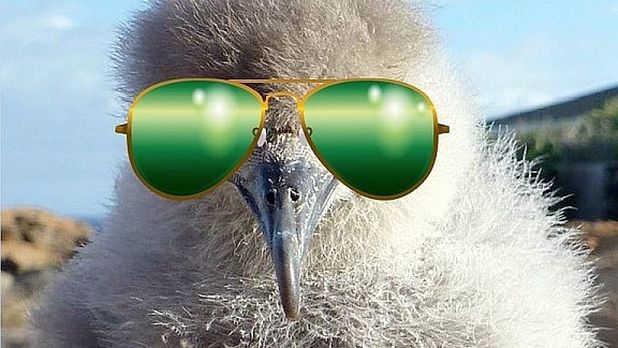|
|
Rationale |
|
Following our initial
research (2011 - 2015) quantifying Wedge-tailed
Shearwater fallout along a coastal highway in
the southeastern shore of Oahu, we have undertaken
a 4-year study to compare seabird fallout before and
after the switch from yellow high-pressure sodium
(HPS) bulbs to white light-emitting diode (LED) highway
lights.
It is our hope that this
research will increase the understanding and public
awareness about shearwater fallout and possible mitigation
efforts aimed at reducing mortality.

A Wedge-tailed Shearwater
chick, grounded along the Kalaniana'ole Highway, in
Waimanalo town, rescued during a road survey.
|

|
Approach
To this end, we completed
the following activities during four years (2016 -
2019):
(i) surveyed a 16-km
section of the Kalaniana'ole Highway, from Hawaii
Kai to Olomana Golf Course, using standardized methods
to map shearwater fallout during the fledging season
(November 1 - December 21),
(ii) marked and resighted
randomly-selected carcasses at daily intervals to
quantify potential biases in the road surveys due
to carcass loss by scavenging and washout, and
(iii) disseminated the
study results via our project web-site, our facebook
site, scientific presentations and public seminars.

| Figure
1. The 16-km survey, spanning
from the Olomana Golf Course (north), through
Waimanalo town, to Hawaii Kai (south). The map
shows the location of the Manana shearwater
colony and of the Sea Life Park rehabilitation
center. |
|

|
Results
Between 2016 and 2019,
we conducted 68 strandardized road surveys during
the fledging season and documented 90 grounded wedge-tailed
shearwaters.
There average number
of grounded shearwaters per year, was similar:
before (25.8 +/- 23.1
S.D., median = 16, range = 11 - 60)
and
after (22.5 +/- 16.7
S.D., median = 18.5, range = 7 - 46)
the switch in highway
lighting, from HPS to LED lights.

| Figure
2. Annual wedge-tailed shearwater
fallout during years with HPS (orange) and LED
(blue) highway lighting, showing the mean (dashed
lines) and S.D.s (error bars). |
After four years of surveys
following the shift from HPS to LED lights, we cannot
detect a significant change in the magnitude of wedge-tailed
shearwater fallout in our study area.
Yet, because there is
substantial inter-annual variability, an in-depth
statistical analysis is underway to assess the influence
of the highway lights, in the context of other potential
environmental drivers, like the moon cycle and the
speed and direction of the prevailing wind during
the fledging season.
To learn about the latest
results, link to the abstract, provided below:
QUANTIFYING ENVIRONMENTAL AND ANTHROPOGENIC
DRIVERS OF WEDGE-TAILED SHEARWATER FALLOUT
ON A COASTAL HIGHWAY ON EAST OAHU
Pacific Seabird Group Conference (2020)
Jennifer Urmston, K. David Hyrenbach,
Susan Carstenn, & Keith Swindle
|
|
You can also view a public
outreach presentation on this research:
|
| |

Pelagicos Contact
David Hyrenbach
Other Pelagicos People
Jenn Urmston
Partners
Keith Swindle

|
|
US Fish and Wildlife Service
Office of Law Enforcement
3375 Koapaka St., Ste. B-296, Honolulu, HI 96819
|
|

|
|
|
